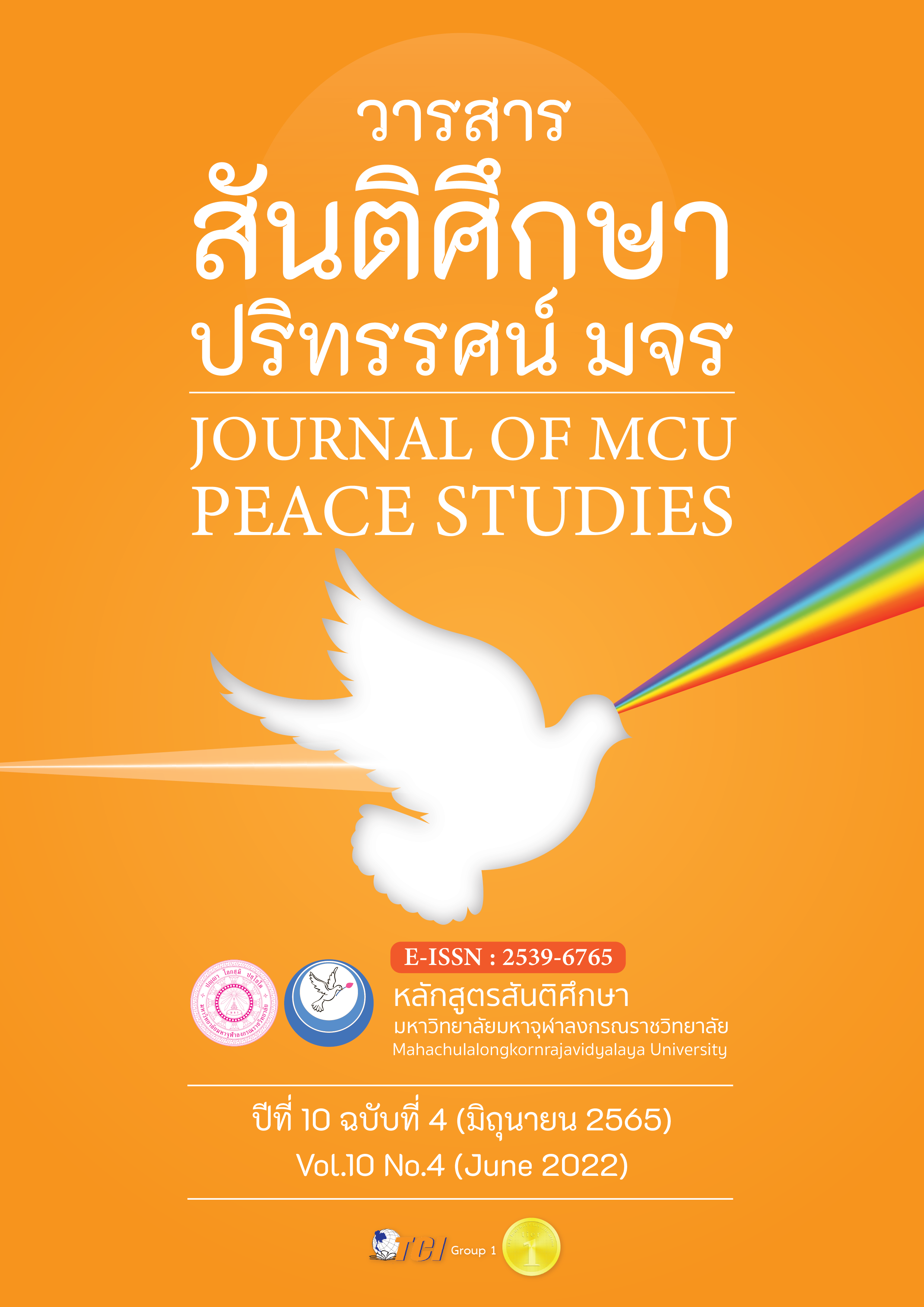Art Education: From worthiness to value through online businesses
Main Article Content
Abstract
Advances in digital technology have pushed education to accelerate the development of human resources in order to cope with the dynamic environment. Art education also plays a key role in developing learners for the 21st century but the process is also affected by changes in the technological environment. Therefore, it is essential for learners to become accustomed on how to effectively use digital technology to cope with the changing trends and apply it to the art business where it will also affect future careers in the art business. In addition, new lifestyles (New Normal) have evolved from the COVID-19 pandemic. From the analysis of some art business websites, it has been established that art education needs to be adapted to create value through online businesses. This article aims to present ways of conducting art-related businesses and be able to create works that reflect the value of art education in a practical economic aspect in the digital era, and present guidelines for the development of art education that is pertinent with the changing world. In this regard, art education creates value through online businesses from conventional multi-disciplinary art education based on 4 bodies of knowledge, which are: 1) knowledge about art, namely history of art, aesthetics, critiquing art, and practical art, 2) the 7C Skills, which include advanced thinking, communication, collaborating with others, understanding the differences between individuals, the use of computers and technology literacy, morality, and emotional intelligence, 3) have an understanding about the current digital era, i.e. technology and innovation, digital economy, integrated marketing, and knowledge about the marketing of art, and 4) art entrepreneur skills, which includes skills on thinking, creating opportunity, strategic planning, networking, leadership, financial management, and sales and marketing.
Article Details

This work is licensed under a Creative Commons Attribution-NonCommercial-NoDerivatives 4.0 International License.
Views and opinions expressed in the articles published by The Journal of MCU Peace Studies, are of responsibility by such authors but not the editors and do not necessarily reflect those of the editors.
References
Asian Development Bank. (2018). South Asia Regional Symposium on ICT for Education.Retrieved August 12, 2020, from https://teams.unesco.org/ORG/fu/bangkok/public_events/Shared%20Documents/EISD/2018/FebSARSIE/Knowledge%20Brochure%20Series%20-%20Issue%206_SARSIE_Oct19.pdf
Charoenwong, M. (2019). Citizens Make Media-Media Make Citizen: Digital Citizen and Social Phenomena Amid the Changing Trends of Media Users and Media Landscape. Nonthaburi: Phappim.
Chobdamrongtham, N., Adisornprasert, W., & Yansomboon, S. (2011). The Influence of Advertising on Online Social Network to Consumer Response Process. Journal of Humanities and Social Sciences, 3(6), 12-26.
Depa. (2019). What is the Big Data? Retrieved August 3, 2020, from https://www.depa.or.th/th/article-view/article-big-data
Digital Council for the Economy and Society of Thailand A.D. 2019. (2019). Government Gazette. Vol. 136 No. 56 A. pp. 69-84.
Digital Government Development Agency. (2019). Blockchain of Government Services –Using Blockchain Technology for Government Sector. Retrieved August 3, 2020, from https://www.dga.or.th/upload/download/file_ff487bacfb3198a615ca75112b8d156c.pdf
Eurostat. (2018). Culture statistics-Cultural employment. Retrieved August 12, 2020, from https://ec.europa.eu/eurostat/statisticsexplained/index.php/Culture_statistics__cultural_employment#Some_other_characteristics_of_cultural_employment
Feldman, E. B. (1996). Philosophy of Art Education. New Jersey: Prentice-Hall.
Hedayat, M. et al. (2013). The Effect of DBAE Approach on Teaching Painting of Undergraduate Art Students. Educational Research and Reviews, 8(15), 1322-1330.
Hiscox. (2019). Hiscox Online Art Trade Report 2019. Retrieved August 12, 2020, from https://www.hiscox.co.uk/online-art-trade-report
International Labour Office. (2017). World Employment Social Outlook. Geneva: Author.
International Labour Office. (2020). ILO Monitor: COVID-19 and the World of Work. (2nd ed.). Geneva: Author.
Kuljitjuerwong, S. (2017). Online Publishing Material Guideline in Digital Era. NIDA Journal of Language and Communication, 21(29), 37-55.
Ma, X., & Yang, S. (2018). Airtasker and the Australian Freelance Workers: The Reflections on the Gig Economy. International Journal of Advanced and Applied Sciences, 5(7), 35-45.
McAndrew, C. (2020). The Impact of COVID-19 on the Gallery Sector. Retrieved August 12, 2020, from https://www.artbasel.com/about/initiatives/the-art-market
Ministry of Education Singapore. (2015). ICT Masterplan in Singapore. Retrieved August 12, 2020, from http://www.unesco.org/new/fileadmin/MULTIMEDIA/HQ/ED/images/singapore.pdf
Ministry of Education Singapore. (2020). Schools to Implement One Day of Home-Based Learning a Week. Retrieved August 15, 2020, from https://www.moe.gov.sg/news/press-releases/schools-to-implement-one-day-of-home-based-learning-a-week
National Arts Council Singapore. (2017). Population Survey on the Arts. Retrieved August 15, 2020, from https://www.nac.gov.sg/whatwedo/support/research/Research-Main-Page/Arts-Statistics-and-Studies/Participation-and-Attendance/population-survey.html
National Arts Council Singapore. (2018). Our SG Arts Plans. Retrieved August 15, 2020, from https://www.nac.gov.sg/aboutus/Our-SG-Arts-Plan-2018-2022.html
Office of the Permanent Secretary, Ministry of Education. (2009). “Art” from Curriculum to School. Retrieved August 3, 2020, from https://www.moe.go.th/moe/th/news/detail.php?NewsID=9987&Key=news_research
Panit, V. (2013). Building Learning into the 21st Century. Bangkok: S. Charoenkhanpim.
Pichayapaiboon, P. (2019). Aesthetics and Art. Bangkok: Chulalongkorn University Printing House.
Rubiao, R. M. (2018). A Short but Deep Dive into the Economics of Arts: Art Entrepreneurs in a Peripheral Market. Artivate, 7(2), 3-26.
Schwab, K., & Davis, N. (2018). Shaping the Fourth Industrial Revolution. (2nd ed.). (Mekpaiboon, Translator). Bangkok: AmarinHow-To.
Sidorova, E. (2019). The Cyber Turn of the Contemporary Art Market. Arts, 8(3), 1-11.
Smith, R. A. (1987). The Changing Image of Art Education: Theoretical Antecedents of Discipline-Based Art Education. Journal of Aesthetic Education, 21(2), 3-34.
State Council of the People’s Republic of China. (2017). China issues guideline on artificial intelligence development. Retrieved August 12, 2020, from http://english.www.gov.cn/policies/latest_releases/2017/07/20/content_281475742458322.htm
Thailand Creative & Design Center. (2019). Singapore and the Plan for upgrading “Happiness Level” in society through Art. Retrieved August 3, 2020, from https://web.tcdc.or.th/th/Articles/Detail/Singapore-CEA-Forum-2019
Thom, M. (2016). Crucial Skills for the Entrepreneurial Success of Fine Artists. Artivate, 5(1), 3-24.
UNESCO. (2020a). Distance Learning Solutions: More on UNESCO's COVID-19 Education Response. Retrieved August 15, 2020, from https://en.unesco.org/covid19/educationresponse/solutions
UNESCO. (2020b). Education: From Disruption to Recovery -COVID-19 Impact on Education. Retrieved August 15, 2020, from https://en.unesco.org/covid19/educationresponse

